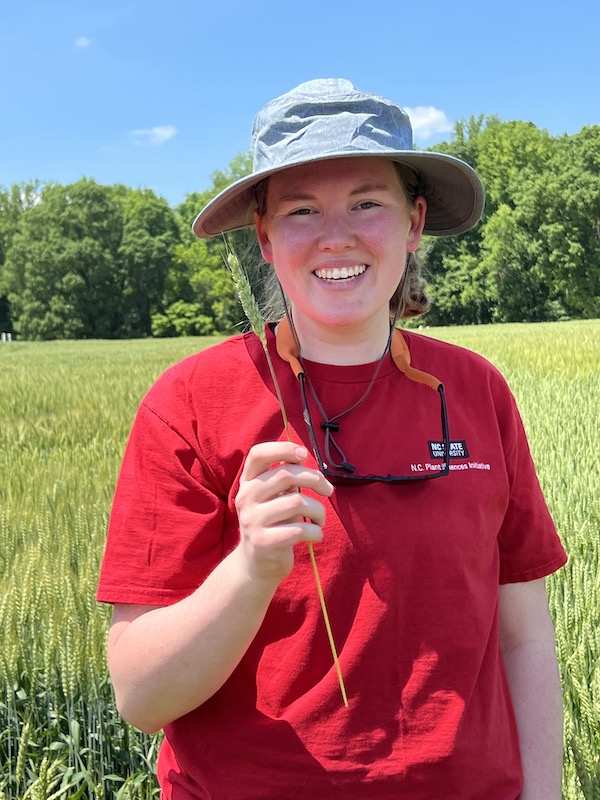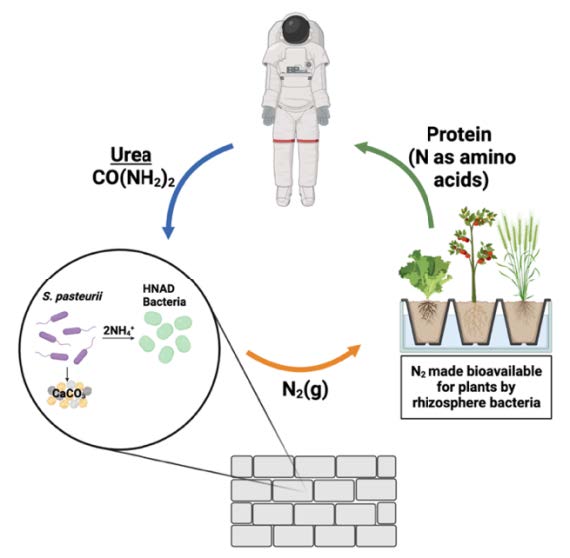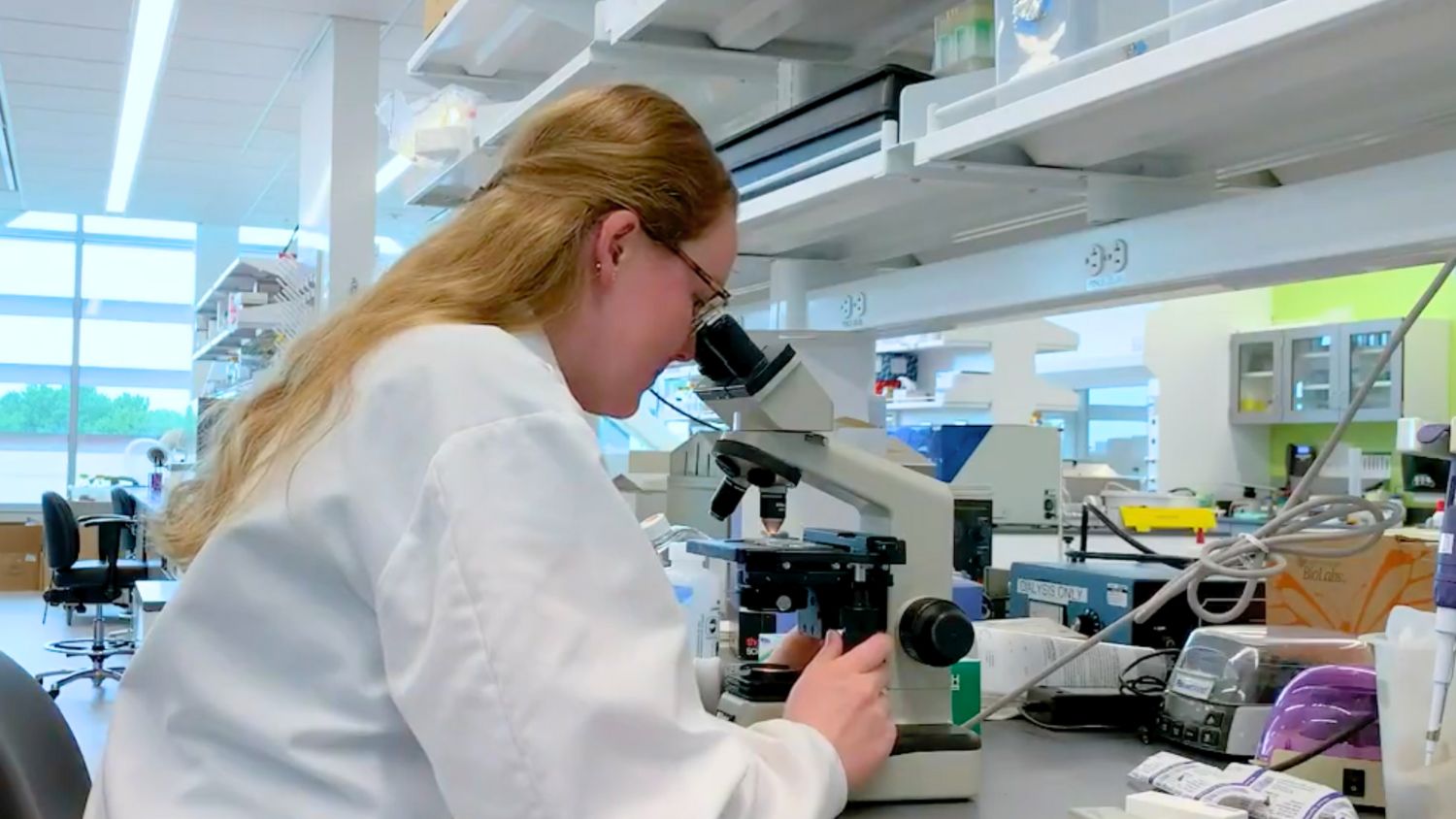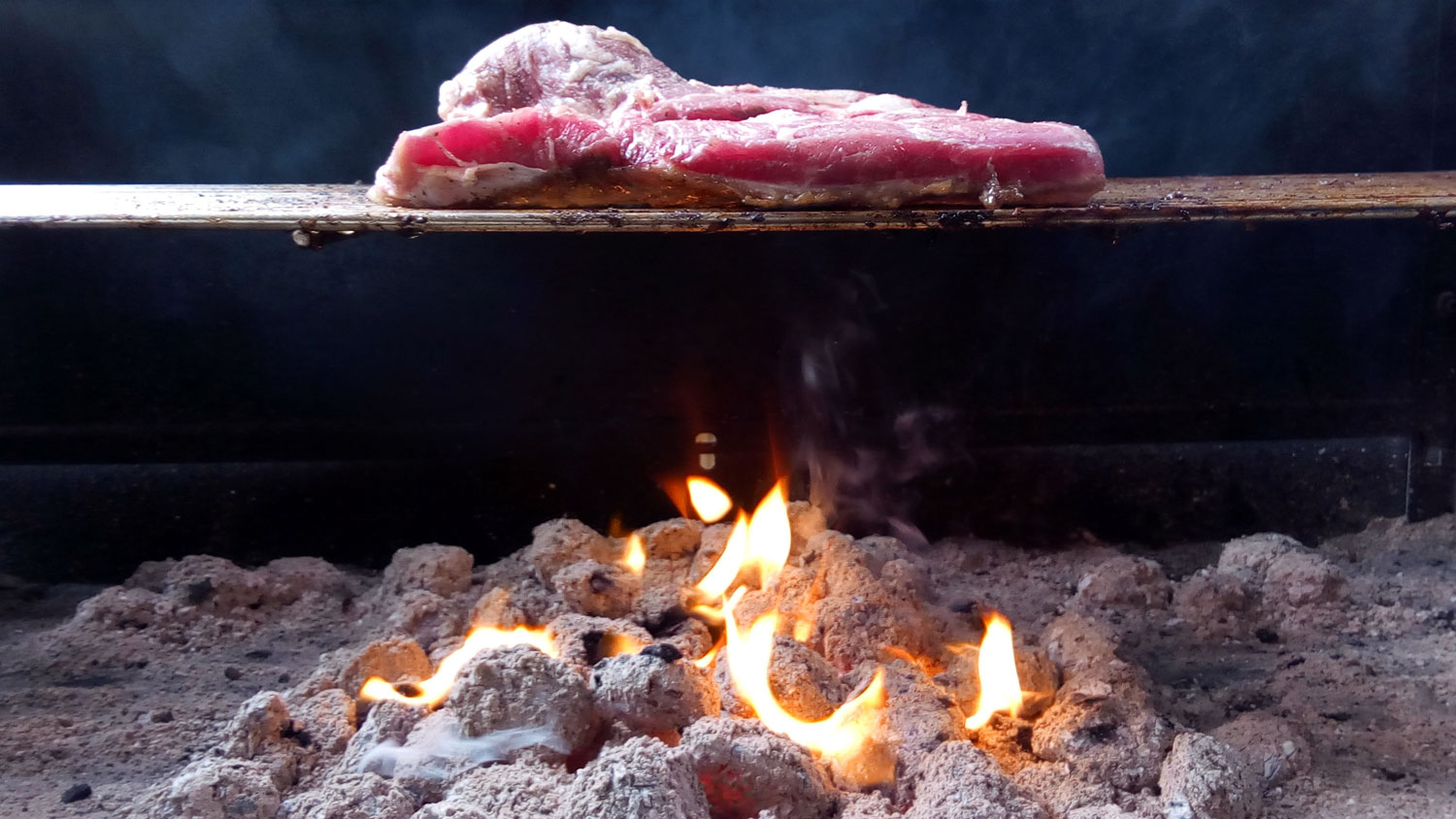Micaela Robson’s research is out of this world. Robson, a graduate student in the Department of Plant and Microbial Biology, is studying how to use bacteria to build bio-based infrastructure in Outer Space as a research fellow for the North Carolina Space Grant. In addition to creating building materials, the project could provide a solution for human waste and help grow crops with limited resources.
“When we’re landing on the moon or Mars, we need ways to create solid landing surfaces,” Robson says. “We also need ways to create structures on surfaces, and it’s expensive to carry materials into space.”
Robson thinks that small but mighty bacteria can muscle up to do this very important job through a process called microbially induced carbonate precipitation (MICP). And all the bacteria have to do is eat.
On Earth, geotechnical engineers use MICP to create structural materials. Through the process, bacteria produce a limestone-like substance called calcium carbonate precipitation, which can be used to glue particles together to make “bio-bricks.”

“The main bacterial metabolism that’s used is called urea hydrolysis,” Robson says. “You feed the bacteria urea, and they will break that down into ammonia and carbonate.”
Urea hydrolysis is geotechnical engineers’ preferred method because of its reliability and speed, but it gives off high levels of toxic ammonia and requires a lot of urea.
On a quest to make the process more sustainable, Robson discovered a strain of bacteria that lives within wheat crops that can munch on the ammonia that’s released.
“I went to the wheat field samples because fertilizer contains lots of ammonia,” she says. “I isolated some bacteria, and sure enough, they’re able to eat the ammonia really, really well. And I know that they’re safe to put back into the environment because they came from the environment.”

“So, hopefully, not only are my bacteria going to remove the ammonia so that it’s not toxic, but it will also create a more effective and efficient system so less urea has to be added to it,” Robson says.
Robson’s project with the NC Space Grant, “Biomaterials for Space Missions—Evaluating Nitrogen Cycling of Microbially Induced Carbonate Precipitation in Lunar Soil Simulant,” launched in June. Her research — performed in The Grunden Lab in NC State’s Plant Sciences Building — is showing promise for a trip to space one day.
First, bacteria are a perfect fit for space travel because they’re small, and there’s not a lot of extra room aboard spacecrafts.
“You would only have to send a tiny tube of preserved spores or freezer stock to space, and then they multiply as long as you need them,” Robson says.
“I love being on the edge of knowledge…”
Second, her process also solves other problems in space, such as waste and food. Urea is a product of human waste and nitrogen helps plants grow.
“There’s a use for waste, and you’re feeding plants which can feed humans,” she says. “It’s a great nitrogen cycling system where you’re maximizing what you’re getting out of the nitrogen and carbon you take into space.”
Robson’s project will conclude next spring with a presentation at NC Space Grant’s annual symposium — but for now, she enjoys that her research is just as mysterious as space travel.
“I love being on the edge of knowledge and knowing that every data point I take and every interpretation that I make is new information that no one else has done before,” Robson says.
- Categories:



